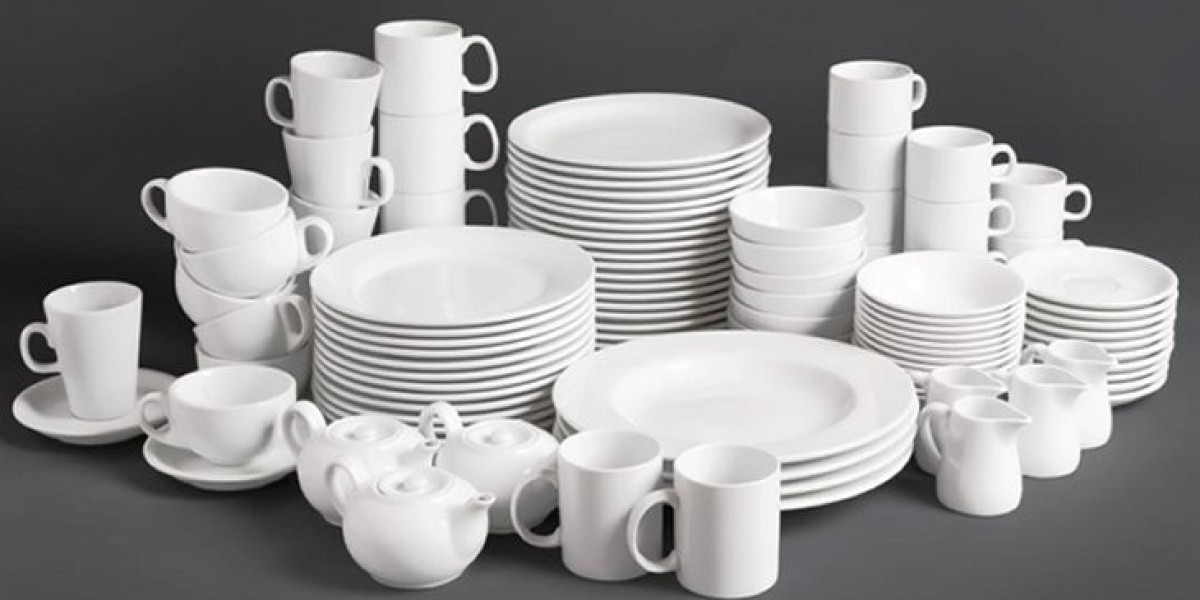In the realm of hospitality and food service, the presentation of food plays a crucial role in shaping the dining experience. Commercial tableware, which includes everything from plates and cutlery to glassware and serving dishes, is essential for creating an appealing and functional dining environment. This guide explores the various types of commercial tableware, their benefits, and tips for selecting and maintaining these important items to elevate the dining experience in your establishment.
What Is Commercial Tableware?
Commercial tableware refers to the dishes, utensils, and serving items used in restaurants, hotels, cafes, and other food service establishments. Unlike residential tableware, commercial tableware is designed for durability, functionality, and style to meet the demands of high-volume use. It encompasses a wide range of items that contribute to both the aesthetics and practicality of dining service.
Types of Commercial Tableware
Dinnerware
- Plates: The cornerstone of any table setting, plates come in various sizes and styles, including dinner plates, salad plates, and dessert plates. Choose durable materials like porcelain, stoneware, or melamine for longevity and ease of maintenance.
- Bowls: Essential for serving soups, salads, and sides, commercial bowls are available in different shapes and sizes, including deep bowls and small ramekins. Look for bowls that complement your overall table setting and are suited to your menu offerings.
Cutlery
- Forks, Knives, and Spoons: These basic utensils are crucial for dining and come in various styles and materials, such as stainless steel and silver-plated options. Invest in high-quality cutlery that is both durable and comfortable for guests to use.
- Specialty Cutlery: For specialized dishes or high-end dining, consider specialty cutlery like steak knives, fish forks, or dessert spoons. Ensure that these utensils align with your restaurant's service style and menu.
Glassware
- Drinking Glasses: Essential for serving beverages, commercial drinking glasses include options like water glasses, tumblers, and highball glasses. Choose glassware that is sturdy and resistant to breakage.
- Wine Glasses and Stemware: For establishments that serve wine or cocktails, a selection of wine glasses and stemware is important. Opt for glasses that enhance the tasting experience and are durable enough for frequent use.
Serving Dishes and Platters
- Serving Platters: Ideal for presenting large portions or a variety of items, serving platters come in different shapes and sizes. Choose platters that suit your menu and offer easy handling.
- Serving Bowls and Trays: Useful for presenting salads, side dishes, and appetizers, serving bowls and trays should be durable and complement the overall tableware collection.
Coffee and Tea Service
- Coffee Pots and Teapots: For establishments offering coffee and tea, consider investing in stylish and functional coffee pots and teapots. These items should be easy to use and maintain while adding to the overall dining experience.
- Cups and Saucers: Coffee cups and saucers are essential for serving hot beverages. Choose designs that match your tableware and offer durability for regular use.
Benefits of High-Quality Commercial Tableware
Enhanced Presentation
- Aesthetic Appeal: High-quality tableware enhances the visual appeal of your food and contributes to a polished and professional dining experience. The right tableware can elevate the presentation of your dishes and create a memorable impression.
- Brand Consistency: Custom or themed tableware can reinforce your brand identity and contribute to a cohesive dining experience. Consider incorporating colors, logos, or patterns that reflect your establishment's style.
Durability and Functionality
- Long-Lasting Materials: Commercial tableware is designed to withstand the rigors of daily use in a high-volume setting. Materials like porcelain, tempered glass, and stainless steel offer durability and resistance to chipping and breakage.
- Ease of Maintenance: High-quality tableware is often easier to clean and maintain, reducing the time and effort required for upkeep. Look for items that are dishwasher-safe and resistant to staining.
Operational Efficiency
- Versatility: Well-chosen tableware can enhance operational efficiency by streamlining service and reducing the need for frequent replacements. Opt for versatile items that can be used across different menu items and dining styles.
- Cost-Effectiveness: Investing in durable and high-quality tableware may involve a higher initial cost, but it can result in long-term savings by reducing replacement frequency and minimizing maintenance issues.
Tips for Selecting and Maintaining Commercial Tableware
Choose the Right Materials
- Durability: Select tableware made from materials that are durable and suitable for your specific needs. For example, melamine is a good choice for high-traffic areas, while porcelain offers a more upscale look.
- Style and Design: Ensure that the style and design of your tableware align with your restaurant's theme and dining experience. Consistency in design helps create a cohesive and inviting atmosphere.
Consider Practicality
- Size and Shape: Choose tableware that is practical for your menu and service style. Consider the size and shape of plates and bowls to ensure they fit your portion sizes and presentation style.
- Stackability: Opt for tableware that can be easily stacked and stored to save space and improve efficiency in your kitchen or storage area.
Regular Maintenance
- Cleaning: Follow manufacturer guidelines for cleaning and maintaining your tableware. Regular cleaning helps prevent damage and ensures that your tableware remains in good condition.
- Inspection: Regularly inspect your tableware for signs of wear and tear. Replace any damaged or chipped items promptly to maintain a high standard of service and presentation.
Budget Considerations
- Cost vs. Quality: Balance your budget with the need for quality tableware. While it is important to manage costs, investing in durable and high-quality items can provide long-term benefits and enhance the dining experience.
Conclusion
Commercial tableware is a critical element in the success of any food service establishment, contributing to both the presentation and functionality of the dining experience. From dinnerware and cutlery to glassware and serving dishes, the right tableware enhances the appeal of your food and ensures efficient service. By selecting high-quality, durable items and maintaining them properly, you can create a polished and inviting dining environment that leaves a lasting impression on your guests.








